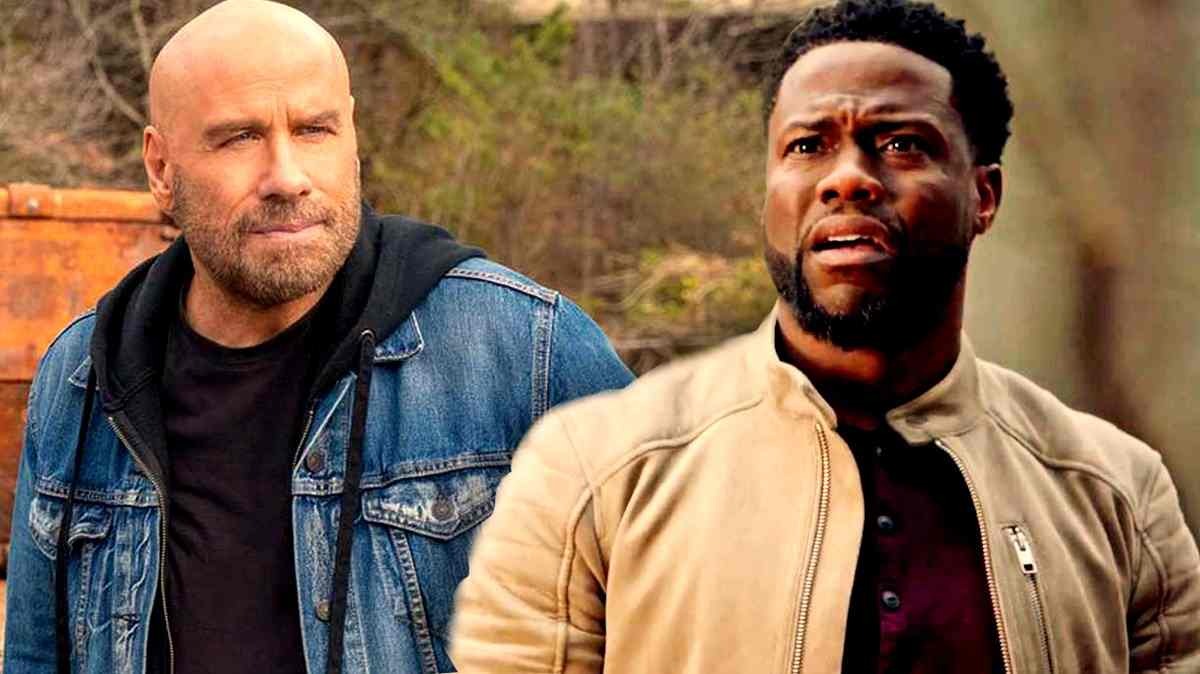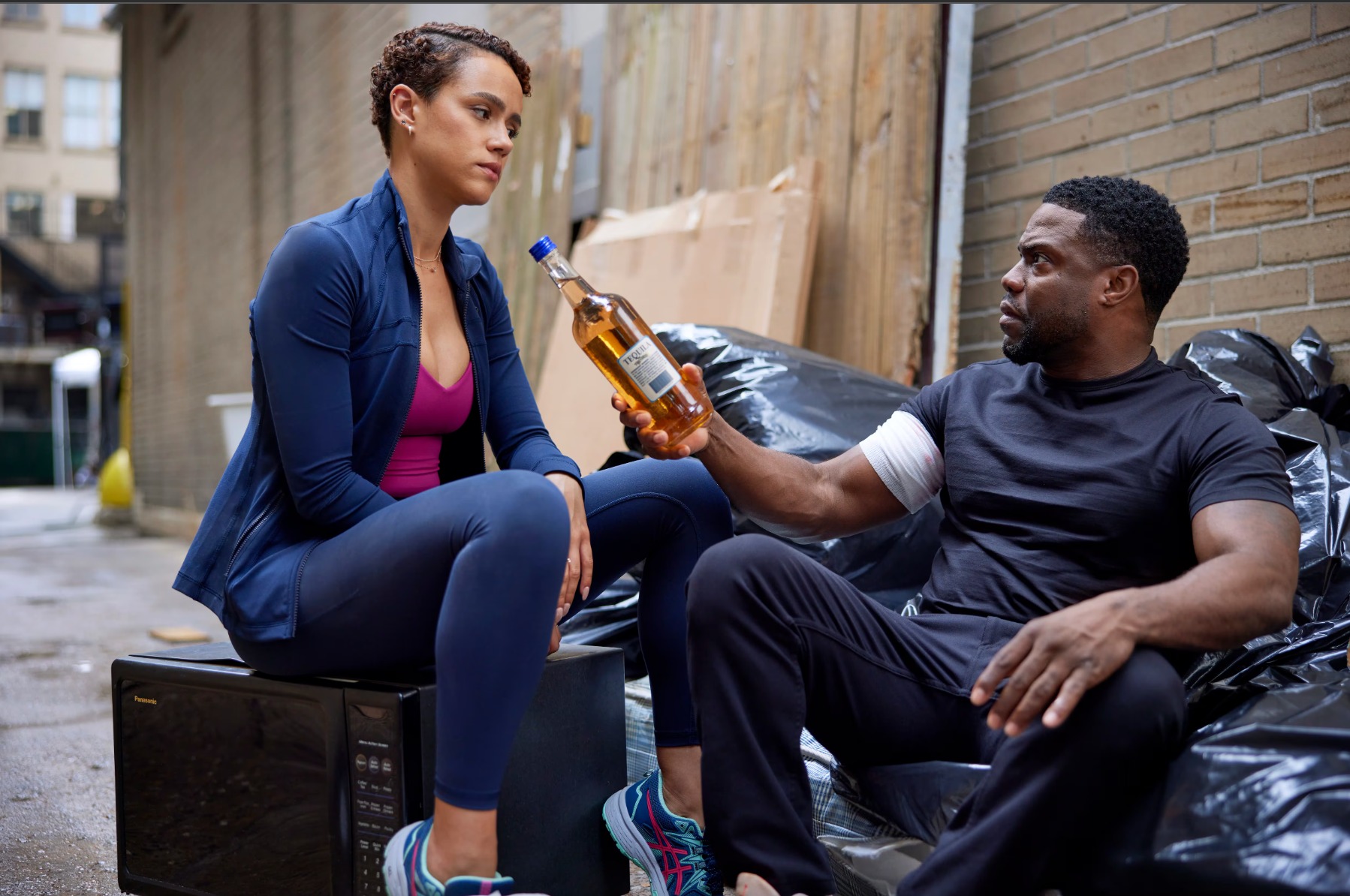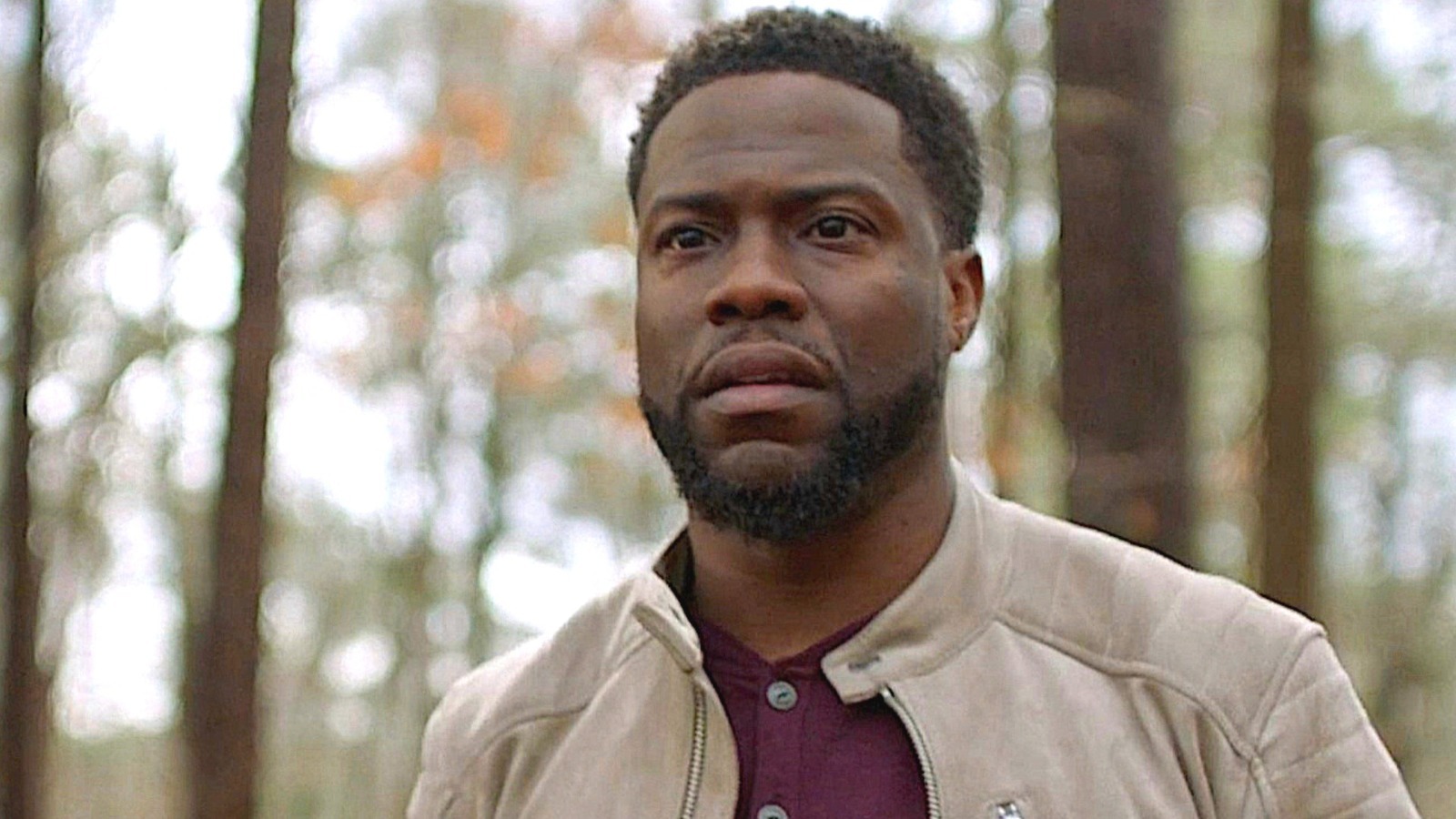Pressure can lead to remarkable transformations, and Kevin Hart’s journey in “Die Hart” illustrates this as he strives to become a leading man in the action genre.
This Amazon Prime film is a revamped adaptation of the Quibi series, featuring Hart alongside John Travolta and Nathalie Emmanuel, who play a quirky ensemble of action heroes, with elements based on reality and fiction.

The film, crafted by Tripper Clancy and Derek Kolstad, showcases a fictionalized version of Kevin Hart on a mission to redefine his identity both on-screen and off. As he crosses a variety of real and imaginary challenges—including facing off against Josh Hartnett—Hart confronts his insecurities and undergoes a test of his character.
“Die Hart” offers a humorous perspective on the struggle of feeling eclipsed by others, even when one is as celebrated as Kevin Hart. True to the nature of a self-referential film, it includes nods to Hart’s actual life, as well as references to his past films and iconic figures like Macho Man Randy Savage.
While the film leaves some mysteries about Ron Wilcox’s Action Star School unresolved, we’ve pieced together many of its secrets to enhance your viewing experience of “Die Hart: The Movie.”
The Struggle for Recognition
The character of Kevin Hart is portrayed as someone desperate for respect in the action genre. Throughout the film, he grapples with his aspirations of becoming a leading man but struggles to break free from his established roles, particularly as a comedic sidekick. In reality, Hart has established a successful career as a comedic heavyweight, frequently collaborating with Dwayne “The Rock” Johnson.
Kevin Hart’s work ethic is evident from his extensive filmography, yet he is also familiar with the controversies that accompany fame. His experiences, both as a humorist and as an individual needing to redeem himself after public missteps, likely inform his portrayal in “Die Hart.”
This film operates within the framework of a lighthearted action-comedy, and while it may seem frivolous, it delves into deeper themes such as self-doubt, self-imposed limitations, and irrational fears—like an aversion to squirrels. Despite following a familiar action-comedy trajectory, the incorporation of personal growth within the genre provides a refreshing twist.
Facing Doubts and Building Confidence
From the outset of “Die Hart,” it’s clear that few believe in Kevin Hart’s dream of becoming an action hero. Despite his verbal commitments to his aspirations, Hart exhibits a lack of self-confidence that mirrors the doubts of those around him.
Throughout the film, he delivers humor through his jokes while also conveying a palpable tension—an embodiment of the insecurities that reside within his small but powerful frame.
Hart’s internal conflict—between bravado and self-doubt—drives his character’s arc in “Die Hart.” Finally, he seeks validation from external sources rather than embracing his true self.
This leads him to accept help from famed action director Claude Van de Velde, portrayed by Jean Reno, who recognizes Hart’s struggles and offers a chance for redemption.
Van de Velde’s dissatisfaction with the commercialism of his films resonates with Hart, creating a bond that propels the narrative. Hart’s desire to escape his typecast as a sidekick reflects a broader commentary on the limitations imposed by others’ perceptions of our potential.
The Antagonistic Coach Ron
In “Die Hart,” Coach Ron emerges as the primary antagonist, with John Travolta delivering a hilariously chaotic performance that adds depth to the film.
His erratic behavior and questionable training methods position him as a nightmare for both intimacy coordinators and Hart alike. Coach Ron’s absurdities regarding Matt Damon and his training regimen add layers of confusion, alongside his genuine tendencies for violence.
While it is evident that Coach Ron is part of Van de Velde’s elaborate scheme, his true intentions remain shrouded in mystery. The film leaves audiences questioning Coach Ron’s past affiliations with Hollywood figures and his role in shaping their careers. These unanswered questions may be explored in a potential sequel, “Die Hart 2: Die Harter.”
A Quest for Authentic Leadership
Initially, Kevin Hart attempts to present himself as a capable leader, but it becomes evident that he needs to learn how to take charge genuinely, rather than relying on catchphrases.
Van de Velde’s plan involves capturing Hart’s authentic reactions to staged perilous situations, yet it is Hart’s determination to carve his own path that facilitates his transformation into an action hero.
While Van de Velde and Coach Ron believe they can coax the best performance from Hart through perilous scenarios, it is through personal defiance and unexpected bonding that he truly grows.
By rebelling against their expectations and choosing his own path, Hart learns to embrace his potential—despite the fact that much of the danger was contrived.
A Journey Towards Self-Discovery
In “Die Hart,” Kevin Hart’s initial interest in the enigmatic actress Jordan (Nathalie Emmanuel) reveals his longing for acceptance and validation. Jordan, seeking to transition from sitcom fame to action stardom, shares Hart’s ambition to be seen as a serious actor. Initially, this dynamic fuels Hart’s insecurities, as he grapples with feelings of inadequacy.
However, as Hart turns his focus away from competition and starts to cultivate his instincts, he begins to take control of his narrative. He learns to trust both himself and Jordan, moving away from his role as a sidelined character. By recognizing her struggles as an actress, Hart forges a collaborative partnership, despite the tension created by their differing motivations.
The duo demonstrates impressive chemistry, even when faced with challenges, allowing Hart to evolve from a comedic sidekick to a more substantial co-star.
The Reality of Insecurities
In a lighthearted moment early in “Die Hart,” Coach Ron playfully confiscates Hart’s phone, prompting a quip about his need to manage his “empire.” In truth, Hart has established a successful entertainment enterprise, showcasing his prowess beyond comedy. This acknowledgment serves as a reminder that even accomplished individuals like Hart face their own insecurities.
Within the context of the film, Hart’s character seeks a confidence boost. Coach Ron’s perplexing training methods, while questionable, offer Hart the chance to demonstrate his capabilities in the wilderness surrounding the filming location. By rescuing a character reminiscent of “Deliverance,” Hart proves his potential as an action star, despite the staged nature of the event.
This scene highlights the importance of recognizing opportunities to experience personal growth, even if they stem from fabricated circumstances. Just as Kevin Hart embraces moments of triumph, we can all find ways to celebrate our achievements.
The Turning Point of Betrayal
The climax arrives when Josh Hartnett’s character seemingly meets his end, confirming Hart’s suspicions about Coach Ron’s entanglements with a dangerous drug dealer named Rodrigo.
Hart confronts the reality that Coach Ron’s Action Star School serves as a front for Van de Velde’s secret film project. This revelation forces Hart to process his feelings towards Coach Ron, who is at his lowest.

Despite their tumultuous relationship, Hart exhibits his inherent heroism as he encourages Coach Ron to take responsibility for his actions. This moment echoes Hart’s own past struggles with accountability and public perception.
In a candid moment, he reflects on his own missteps and encourages Coach Ron to express remorse, mirroring Hart’s willingness to learn from past mistakes.
Hart’s honest guidance to Coach Ron is a testament to his character growth, demonstrating that even in the middle of comedic circumstances, there lies a sincere message about integrity and accountability.
The Leap of Faith
At the crux of Hart’s transformation is the necessity of taking a leap of faith—a fundamental challenge he initially struggles to embrace. This pivotal moment is underscored by Hart’s reluctance to jump from a roof, reflecting his lingering fears and doubts about his abilities.
As the narrative progresses, Hart eventually takes a monumental leap, not merely to validate himself, but to save Jordan and escape peril. While Jordan’s strengths as an action star may overshadow his, Hart learns to adapt, evolving from a comedic foil to a capable action partner.
Confronting Personal Fears
In a humorous moment at the film’s outset, Hart is teased on a morning talk show about his irrational fear of woodland creatures. This light-hearted jab reveals his fragile state of mind, as he becomes defensive when squirrels are mentioned.
As he interacts with these creatures at Ron Wilcox’s Action Star School, it becomes apparent that Hart’s unease reflects his deeper struggles with self-acceptance.
This tension underscores the notion that Hart’s fears—both of woodland creatures and himself—are intertwined. His character’s journey is emblematic of the universal struggle for understanding and validation, as he learns to confront his own limitations and embrace who he truly is.



